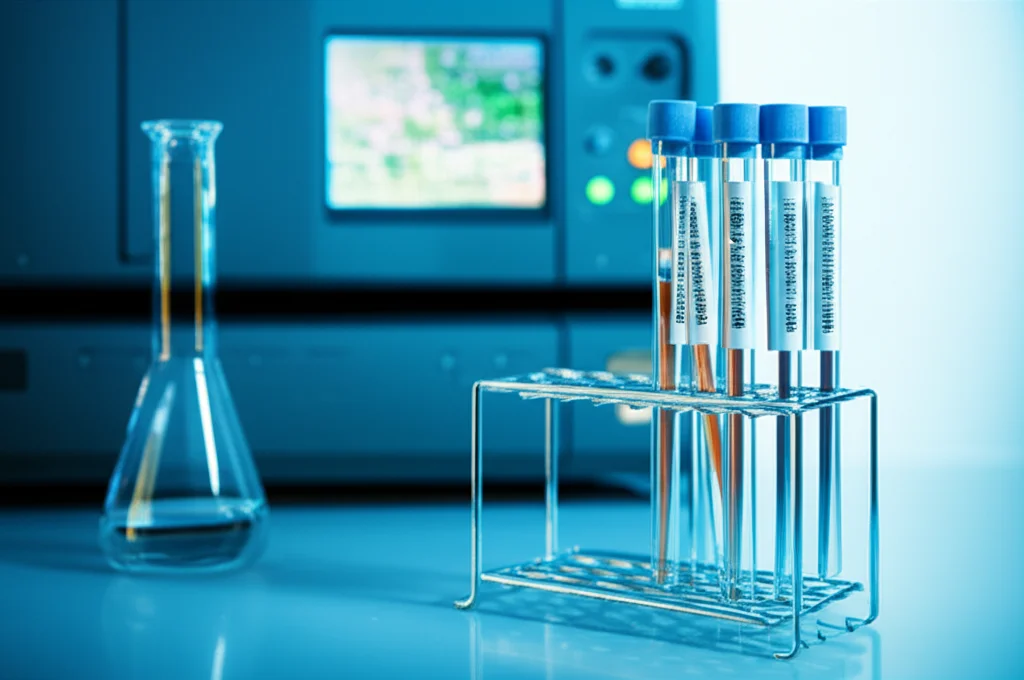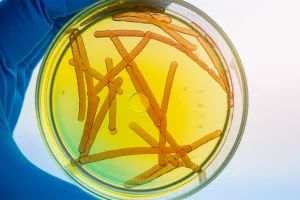Yeast Gets a High-Tech Makeover: CRISPR Unleashes Chiral Amine Power!
Hey there, fellow science enthusiasts! Let’s chat about something super cool happening in the world of biotechnology. You know how we need all sorts of complex molecules for medicines, materials, and more? Often, these molecules need to be *chiral*, meaning they have a specific 3D shape, kind of like your left and right hands. Making these specific shapes using traditional chemistry can be tricky, sometimes needing harsh conditions and creating waste.
Enter biocatalysis! This is where we get nature’s tiny helpers, like enzymes or whole cells (hello, yeast!), to do the chemistry for us. They’re often super precise, work under gentle conditions, and can be way greener. We’ve been exploring how to get our old friend, baker’s yeast (*Saccharomyces cerevisiae*), to become a mini-factory for a really important class of chiral molecules: chiral amines.
The Challenge of Making Amines with Yeast
Now, yeast is great for many things, but getting it to make chiral amines efficiently through a process called *reductive amination* has been a bit of a puzzle. This reaction basically adds an amine group to a starting molecule (a ketone) using a special enzyme called a transaminase (ATA). We’ve tried adding ATAs from other organisms into yeast before, and it worked okay for some reactions, but pushing the reaction strongly towards the desired amine product has been tough.
One big reason for this difficulty seems to be the reaction’s equilibrium – it naturally prefers to go the other way! Plus, yeast’s own busy internal life, its metabolism, can get in the way. Specifically, the molecule pyruvate, which is central to yeast’s energy production, can actually inhibit the transaminase enzyme we want to use. And yeast has its own enzyme, called ALT1, that messes with alanine and pyruvate, potentially competing with our desired reaction.
Our High-Tech Solution: Engineering with CRISPR-Cas9
So, we decided to put on our engineering hats and give yeast a serious upgrade. Our goal was to make it really good at converting a specific starting material, benzylacetone (BA), into a valuable chiral amine called (S)-1-methyl-3-phenylpropylamine (MPPA), using a promising transaminase from a bacterium called Chromobacterium violaceum (Cv-ATA).
We focused on tweaking that tricky alanine-pyruvate part of the yeast’s metabolism. We figured if we could reduce the competition for alanine (which we wanted to use as our amine donor) and maybe lower those pesky pyruvate levels, we could boost MPPA production.
And guess what tool we pulled out for this precise genetic surgery? The molecular scissors everyone’s talking about – CRISPR-Cas9! We actually developed a neat, simple method using CRISPR/Cas9 for *universal gene replacement*. This allowed us to easily swap out yeast’s native ALT1 gene for something else, or even for extra copies of our desired Cv-ATA gene.

Finding the Best Partner: Why Alanine Shines
First off, we needed to find the best ‘amine donor’ – a molecule that could donate its amine group to BA, catalyzed by Cv-ATA. We screened a bunch of different amino acids. We tested them at different concentrations to see which ones worked best.
After putting several amino acids through their paces, one clearly stood out: alanine! It consistently gave the highest yields of MPPA across different concentrations and over time. This makes sense because Cv-ATA is known to work really well with alanine. Alanine is also super soluble in water and yeast is good at taking it up, making it an ideal partner for our reaction.
Growth Matters: Glucose vs. Ethanol
As we were testing our engineered yeast strains, we noticed something really interesting about when they decided to start making MPPA. Yeast is a bit famous for how it grows: it loves glucose and ferments it first (even with air!), making ethanol. Then, when the glucose is gone, it switches gears and starts breathing, growing on the ethanol it made.
We found that our MPPA production *only* kicked off during this second phase, when the yeast was growing on ethanol! When they were happily munching on glucose, very little MPPA was produced, even though the Cv-ATA enzyme was present.
To keep an eye on this, we even put a ‘growth reporter’ gene into our yeast, making them glow green when they were growing. This helped us see exactly when different strains were growing and correlate that with when they were making MPPA.
The Pyruvate Problem Unpacked
Why the ethanol preference for MPPA production? This brings us back to pyruvate. We hypothesized that during the fast glucose growth phase, yeast produces a lot of pyruvate. This high intracellular pyruvate concentration could be inhibiting our Cv-ATA enzyme, preventing it from efficiently making MPPA.
When yeast switches to growing on ethanol, it uses up pyruvate, lowering its concentration inside the cell. This, we think, releases the brake on Cv-ATA, allowing MPPA production to begin.
To test this, we used our shiny new CRISPR method to knock out the native ALT1 gene, which is involved in alanine-pyruvate metabolism. We also replaced ALT1 with an extra copy of the Cv-ATA gene. The idea was twofold: remove the competition for alanine and add more of our desired enzyme right into that metabolic hot spot.

Boosting Production: The Payoff
And the results were fantastic! Deleting the native ALT1 gene and replacing it with an additional copy of Cv-ATA significantly improved MPPA production. Compared to a control strain with ALT1 intact, our engineered strain showed a whopping 2.6-fold increase in MPPA yield!
We also tested strains with different numbers of Cv-ATA gene copies. As you might expect, more copies generally meant higher production, with a strain having seven copies performing best.
Our measurements of pyruvate levels in the growth media supported our hypothesis. Strains that failed to produce MPPA (those that couldn’t grow well on ethanol, often due to ALT1 deletion without enough extra ATA copies) maintained higher levels of pyruvate even after glucose was gone. Strains that *did* produce MPPA had much lower pyruvate levels during the ethanol growth phase.
This really highlighted that managing the intracellular environment, particularly keeping pyruvate levels in check during the production phase, is key for efficient reductive amination in yeast.
Other Interesting Bits
We also looked for other potential reactions happening. We detected a small amount of a side product, an alcohol (4-Phenylbutan-2-ol), suggesting yeast has other enzymes that can act on the starting material BA. Interestingly, this side product wasn’t detected in strains where ALT1 was deleted, which might be linked to changes in the cell’s redox balance.
Using advanced techniques like NMR with labeled molecules (15N alanine and 13C glucose), we also stumbled upon another molecule: ethylamine. It seemed to be produced inside the yeast cells that were making MPPA. We initially wondered if Cv-ATA was making it, but tests with the purified enzyme suggested it wasn’t. This means there are likely other native yeast enzymes at play, doing interesting chemistry we didn’t expect!

Wrapping It Up
So, what’s the big takeaway from all this? We’ve shown that metabolically engineered baker’s yeast can be a super effective catalyst for making valuable chiral amines from simpler starting materials. By strategically using CRISPR-Cas9 to replace a native gene (ALT1) with our desired enzyme (Cv-ATA) and by understanding that growing the yeast on ethanol (not glucose) is crucial to avoid pyruvate inhibition, we significantly boosted production.
Under our best conditions, we achieved a yield of 58% for the conversion of benzylacetone to MPPA. This is a solid step forward!
These findings really underscore the power of combining metabolic engineering and cutting-edge genetic tools like CRISPR-Cas9 to create robust, efficient, and potentially greener biocatalysts for producing important chemicals. It’s pretty exciting stuff, opening doors for cleaner ways to make pharmaceuticals, agrochemicals, and more!

Source: Springer







